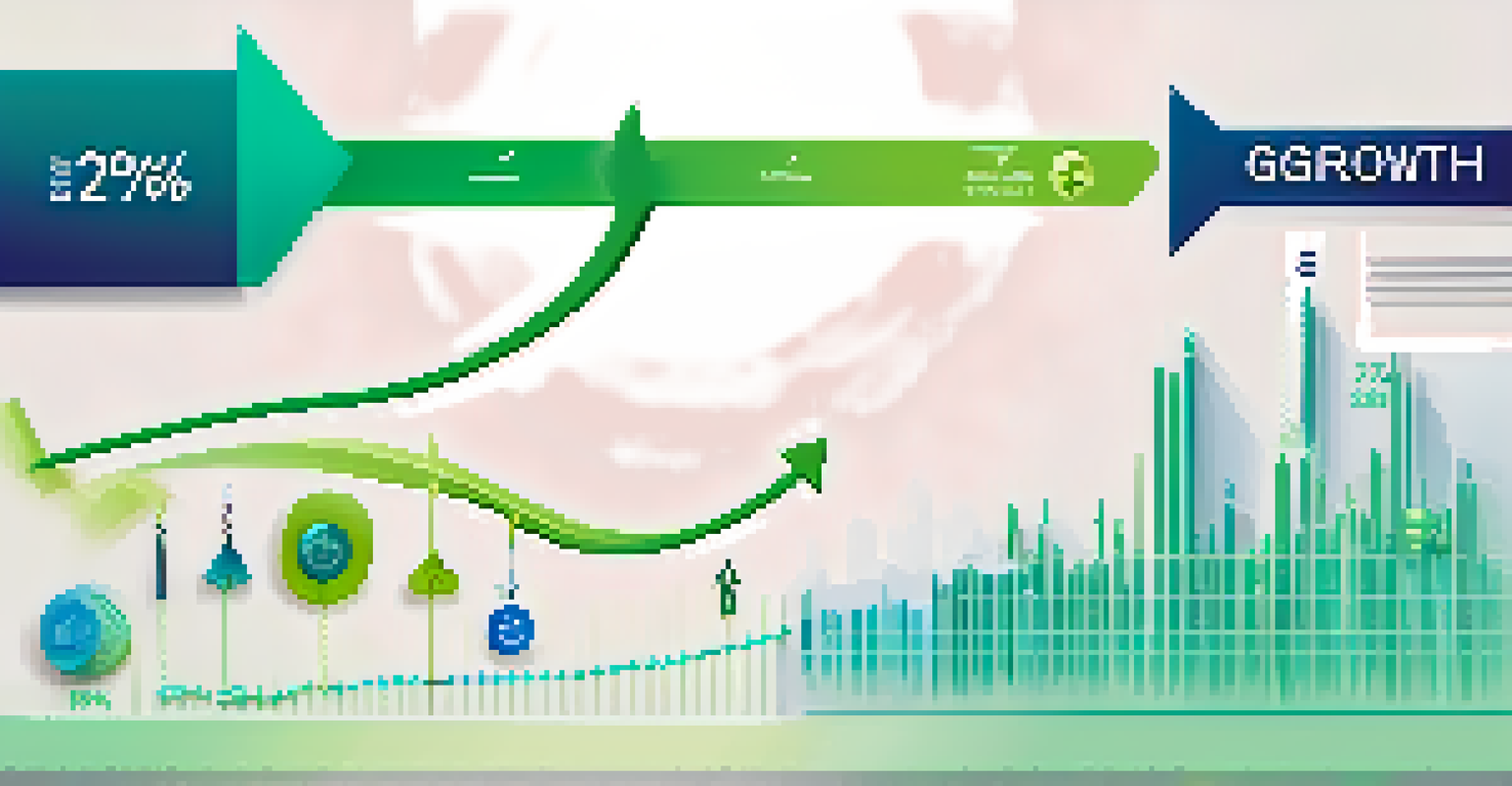The Impact of Interest Rates on Your Business Finances

What Are Interest Rates and Why Do They Matter?
Interest rates represent the cost of borrowing money or the return on savings. For businesses, understanding these rates is crucial as they can impact everything from loans to investments. Essentially, higher interest rates mean higher costs for borrowing, which can squeeze your budget and affect profitability.
Interest rates are the price of money, but for businesses, they can be the lifeblood of growth or the anchor of debt.
For example, if your business takes out a loan to expand, a slight increase in interest rates can lead to significantly higher monthly payments. This creates a ripple effect, influencing your cash flow and potentially your ability to hire staff or invest in new equipment. Therefore, keeping an eye on interest rate trends is essential for financial planning.
Moreover, interest rates can also signal the overall health of the economy. When rates are low, it's often a sign that the government is encouraging spending and investment, which could be a golden opportunity for businesses to grow. On the flip side, rising rates might indicate a tightening economy, prompting businesses to be more cautious.
The Direct Impact of Interest Rates on Business Loans
When you consider taking out a business loan, the interest rate directly affects the total amount you'll repay over the life of the loan. For instance, a loan of $100,000 at a 5% interest rate will cost you less in total interest than the same loan at 7%. This difference can significantly impact your financial planning and cash flow.

Additionally, different types of loans come with varying interest rates. For instance, secured loans, which require collateral, often have lower rates compared to unsecured loans. Understanding these nuances can help you choose the right financing option for your business needs, ultimately saving you money.
Interest Rates Affect Borrowing Costs
Higher interest rates increase the cost of loans, impacting business cash flow and financial planning.
Furthermore, fluctuating interest rates can influence your decision on whether to borrow now or wait. If rates are expected to rise, it might be wise to secure that loan sooner rather than later. On the other hand, if rates are falling, waiting could lead to more favorable borrowing conditions.
Effects of Interest Rates on Cash Flow Management
Cash flow management is vital for any business, and interest rates play a critical role in this area. Higher interest rates can lead to increased monthly repayments on existing loans, reducing the cash flow available for day-to-day operations. This can make it challenging to cover basic expenses or invest in growth opportunities.
In the world of finance, the cost of capital is the heartbeat of every business decision.
For instance, if your business has multiple loans, a rise in interest rates could mean a significant portion of your revenue goes toward servicing debt rather than reinvesting it back into the business. This situation can limit your ability to respond to market changes or seize new opportunities, putting you at a competitive disadvantage.
Conversely, lower interest rates can free up cash flow, allowing businesses to allocate funds toward expansion, marketing, or other critical areas. This flexibility can be the difference between thriving and merely surviving in a competitive landscape.
How Interest Rates Influence Investment Decisions
Interest rates can also affect how businesses approach investment decisions. When rates are low, borrowing costs decrease, making it an attractive time for businesses to invest in new projects, technology, or equipment. This can lead to innovation and growth, helping your business stay competitive.
On the other hand, when interest rates rise, businesses may become more conservative with their investments. Higher borrowing costs can lead to a reevaluation of projects, potentially delaying or scrapping planned initiatives. This cautious approach can stifle growth and limit opportunities for expansion.
Interest Rates Influence Investments
Low interest rates encourage borrowing for investments, while high rates may lead to cautious spending and stalled growth.
Moreover, the cost of capital is directly tied to interest rates. If your business relies on external financing for growth, understanding how interest rates will impact your cost of capital is essential. Keeping track of these rates can help you make informed decisions about when and how much to invest.
The Connection Between Interest Rates and Consumer Spending
Interest rates not only impact businesses but also affect consumer spending. When interest rates are low, consumers are more likely to borrow money for big-ticket items like homes and cars. This increased consumer spending can have a direct positive effect on your business’s sales and revenue.
For example, if your business sells luxury goods, a thriving economy with low interest rates might lead to higher sales as consumers feel more confident in their financial situation. Conversely, when interest rates rise, consumers may cut back on spending, which can lead to decreased sales for businesses across various sectors.
Understanding this connection can help you anticipate market trends and adjust your business strategies accordingly. If you know that interest rates are expected to rise, you might consider ramping up marketing efforts or offering promotions to encourage sales before consumer spending declines.
Navigating Interest Rate Risks in Your Business Strategy
Every business should have a strategy to manage interest rate risks, especially in a fluctuating economy. This can involve diversifying financing options or locking in fixed-rate loans to shield your business from rising rates. By doing so, you can create a more stable financial environment for your operations.
Additionally, keeping a close eye on economic indicators can help you anticipate changes in interest rates. Being proactive rather than reactive can give you a competitive edge, allowing you to adjust your strategies ahead of time. For example, if you expect rates to rise, you may choose to refinance existing loans while rates are still lower.
Consumer Spending Tied to Rates
Low interest rates boost consumer confidence and spending, directly benefiting businesses, while rising rates can lead to decreased sales.
Moreover, using financial tools such as interest rate swaps or options can help mitigate risks associated with fluctuating rates. Understanding these tools and when to use them can add another layer of protection for your business finances.
The Long-Term Effects of Interest Rates on Business Growth
Over the long term, the effects of interest rates can significantly shape the trajectory of your business. Consistently high interest rates may hinder growth, leading to missed opportunities or reduced competitiveness. In contrast, a stable or declining interest rate environment can foster business expansion and innovation.
For instance, businesses that can access affordable financing during periods of low interest rates may invest in research and development, leading to new products or improved services. As these innovations come to market, they can drive growth and help build a loyal customer base.

Ultimately, understanding how interest rates impact your business finances can lead to more informed decision-making. By factoring these rates into your financial strategy, you can position your business for sustainable growth in both favorable and challenging economic conditions.